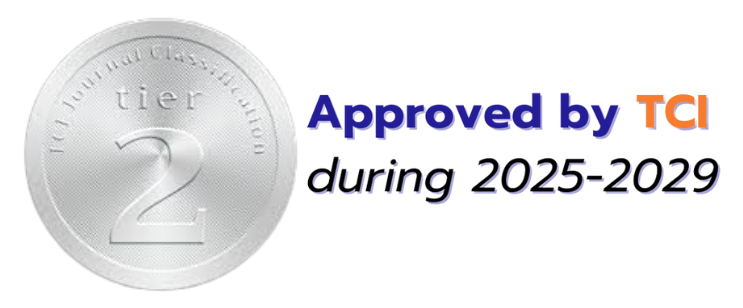ปัญหาและกลวิธีการแปลบทความทางการศึกษาจากภาษาอังกฤษเป็นไทย ของนิสิตสาขาภาษาอังกฤษศึกษา | Problems of Translation and Strategies for English into Thai Academic Text Translation of Students Majoring in English Education
คำสำคัญ:
ปัญหาการแปล, กลวิธีการแปล, การแปลบทความทางการศึกษา, Problems of Translation, Strategies for Translation, Academic Text Translationบทคัดย่อ
การวิจัยนี้มีจุดประสงค์ ได้แก่1) เพื่อศึกษาปัญหาการแปลบทความทางการศึกษาจากภาษาอังกฤษเป็นไทยของนิสิตสาขาวิชาภาษาอังกฤษศึกษา2) เพื่อศึกษากลวิธีการแปลบทความทางการศึกษาจากภาษาอังกฤษเป็นไทยของนิสิตสาขาวิชาภาษาอังกฤษศึกษา คณะศึกษาศาสตร์และพัฒนศาสตร์ มหาวิทยาลัย เกษตรศาสตร์ วิทยาเขตกำแพงแสน ผู้วิจัยวิเคราะห์บทแปลของบทความทางการศึกษาเกี่ยวกับการเรียนการสอน ระดับปฐมวัยจำนวน 11 เรื่อง โดยเก็บข้อมูลจากการวิเคราะห์เอกสารเทียบเคียงระหว่างภาษาอังกฤษและภาษาไทย และวิเคราะห์ข้อมูลโดยใช้ค่าร้อยละและความถี่ ผู้วิจัยพบกลวิธีการแปลแบ่งออกเป็น 2 ระดับ คือ ระดับคำและระดับโครงสร้าง กลวิธีแปลในระดับคำที่ผู้แปลใช้มากที่สุด 3 อันดับแรก ได้แก่ การเติมคำอธิบาย (ร้อยละ 28.57) การเลือกใช้คำตามบริบท (ร้อยละ 21.43) และการตัดคำหรือสำนวนทิ้งไป (ร้อยละ 17.86) ตามลำดับ สำหรับกลวิธีการแปลในระดับโครงสร้าง กลวิธีที่พบมากที่สุด ได้แก่ การเปลี่ยนโครงสร้างของคำ (ร้อยละ 21.79) ลำดับต่อมาคือ การทับศัพท์ (ร้อยละ 17.95) และการปรับระเบียบวิธีเรียงคำในประโยคหรือวลี (ร้อยละ 14.10) ส่วนปัญหาในการแปล ผู้วิจัยสัมภาษณ์ผู้แปลจำนวน 4 คน และลำดับความถี่ปัญหาที่ผู้แปลประสบจากมากไปน้อยพบว่า ปัญหาคือ การขาดความรู้ทางด้านโครงสร้างและไวยากรณ์ภาษาอังกฤษการเลือกใช้คำ การขาดความรู้ทางด้านวัฒนธรรมเจ้าของภาษาหรือความรู้เฉพาะทาง อีกทั้งเวลาในการแปลยังเป็นข้อจำกัด ส่งผลให้เกิดการแปลขาด แปลคลาดเคลื่อน และแปลเกิน ซึ่งทำให้ความหมายผิดเพี้ยน
The research aimed to 1) investigate the students’ problems while translating; and 2) analyze the translation strategies for translating academic texts of students majoring in English Education, Faculty of Education and Development Sciences, Kasetsart University KampeangSaen Campus. Eleven academic texts in the area of early childhood education were selected as the sample. The research collected the data by analyzing equivalences between original language and target language. The analyzed data was presented by percentages and frequency. At the lexical level, the result shown that the top-three strategies found to be used most frequently were giving the short explanation (28.57 %), word selection in context (21.43%) and words or idiom omission (17.86%). Furthermore, at the structure level, the three strategies appeared most frequently were changing word structure (21.79%), transcription (17.95%) and rearranging word order in phrases or sentences (14.10%). According to interviewing to 4translators, the researcher sorted this data based on frequency in descending order.The problems of translation were revealed that some statements were omitted without translation; moreover, meanings of the texts were inaccurate or error. Causes of these ineffective translated texts consisted of translators’ lacks of English structures and background knowledge on culture and specific terms, as well as, lack of time for considering the grammar and searching for the information needed to.







